The use of Epsom salt in farming has gained a lot of attention because people are realizing the benefits it can have on plants. Epsom salt is made up magnesium sulphate (MgSO₄), an important mineral compound, which enhances nutrient absorption, improves soil quality and supports physiological mechanisms necessary for different plants’ operations. This article will delve into those particular plant species that benefit from using Epsom salt, while shedding light on the notable advantages associated with its use. When gardeners comprehend how to employ Epsom salt at the appropriate period they maximize their gardening activities and find their gardens become more receptive and fruitful.
Epsom Salt for Vegetable Plants
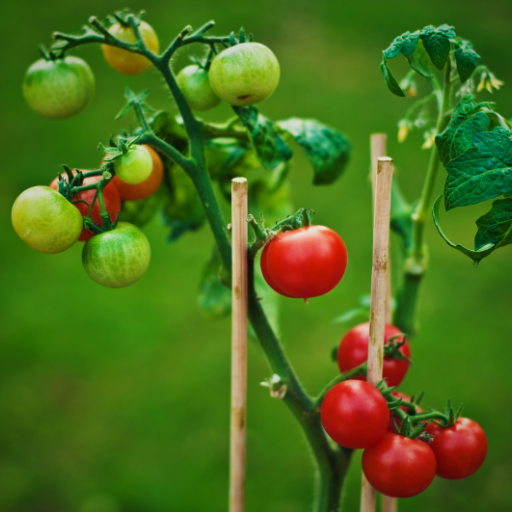
For instance, if vegetable plants like tomatoes, peppers and leafy greens are low in magnesium content, they can benefit from applying Epsom salts. Magnesium is involved in photosynthesis and helps to make chlorophyll which is important for plant growth. Gardeners can enhance the nutrient uptake efficiency of these plants by applying Epsom salts as a foliar spray or soil amendment thereby improving growth rate, increasing production and promoting healthier foliage. It is advisable to dissolve 1 tablespoon of Epsom salt in a gallon of water and use it once per month, especially during growing season for best results.
How does Epsom Salt promote Tomato and Pepper Growth?
Enhancing tomato and pepper development through the supply of magnesium via Epsom salt enables numerous physiological processes to occur in these types of plants. Chlorophyll constitutes one molecule, at the core of which is magnesium; this allows light to be captured by plants into energy through photosynthesis. Reduced growth and yellow leaves on tomatoes and peppers indicate a lack of magnesium.
It also affects nutrient uptake efficiency since it corrects magnesium deficiencies within soils. You can apply Epsom salt as a foliar spray or soil drenching for tomatoes and peppers. The standard dosage guideline is 1 tablespoon (about 15g) dissolved in 1 gallon (4 liters) mixed with water each month. Use a little more concentrated mixture if an initial deficiency sign has been noticed: dilute about thirty grams (2 tablespoons) per gallon when applying it on leaves.
Moreover, it also reduces chances for tomato blossom end rot which is often associated with calcium-magnesium imbalance. Better absorption and distribution of other vital nutrients come up when there are enough levels of magnesium holding up the structure integrity, among other things, on the plant’s body. As such better fruit quality enhanced overall strength against diseases such as pestsresults.
Why Leafy Green Vegetables Benefit from Using Epsom Salt
For example, Epsom salt can provide essential nutrients like magnesium and sulfur for the development of leafy green vegetables. Magnesium is necessary for chlorophyll production and photosynthesis, while sulphur helps synthesize amino acids, proteins, and enzymes.
Commonly seen magnesium deficiencies are interveinal chlorosis or yellowing between leaf veins which can be remedied by applying Epsom salt. In order to achieve optimal results in growing leafy greens, it is recommended that 1 tablespoon (approximately 15g) of Epsom salts be dissolved in a gallon of water for use either as foliar spray or soil drench once every fortnight. For more serious deficiency symptoms, a concentrate of 2 tablespoons (approximately 30 g) per gallon may be sprayed directly onto the leaves.
Studies have indicated that proper use of Epsom salt leads to efficient nutrient utilization, thereby enhancing plant health and productivity. The technical parameters to consider when using it successfully include maintaining soil pH within the range of 6.0 to 7.0 this allows for adequate availability of nutrients among others. Consistent monitoring and adjustment of irrigation practices are also important in preventing leaching out of magnesium in sandy soils or areas with high amounts of water supply.
Robust growth and higher yield of leafy green vegetables can be brought about by Epsom salt that maintains adequate magnesium levels, thus supporting better structural integrity and resilience against environmental stresses.
Why Epsom Salt is so Good for Root Vegetable Health
Epsom salt’s role in root vegetable health is important because some of its basic minerals are lacking such as magnesium and sulfur which are essential for various bodily functions. Magnesium plays a role in chlorophyll synthesis and photosynthesis thereby increasing energy production throughout the plant. Similarly, sulfur is needed for amino acids formation as well as acting as an essential component for enzymes hence contributing to cellular structures and metabolic processes.
For instance, proper magnesium levels are necessary to develop extensive strong roots on root vegetables such as carrots and potatoes. Common issues like stunted growth or poor root formations may be addressed through applying Epsom salt. Hence, it requires a dosage similar to that of leafy greens which involves dissolving 1 tablespoon (approximated 15 grams) of Epsom salt into one gallon of water at a time and then apply this solution bi-weekly as soil drenching. This will help to treat acute deficiencies during foliar feeding with a more concentrated solution using approximately two tablespoons (30 grams) per gallon.
Epsom Salt for Flowering Plants
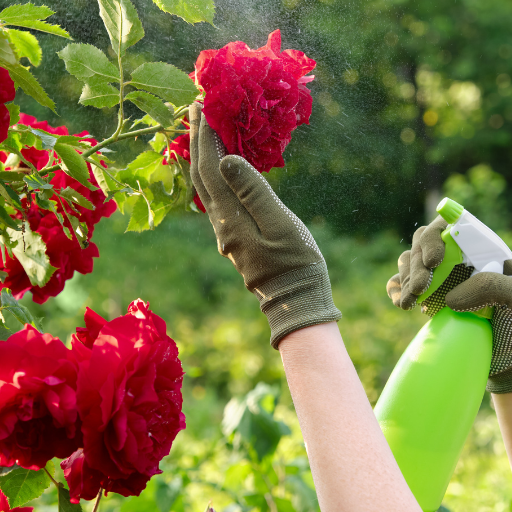
The primary reason for this is that Epsom salt having hydrated magnesium sulfate does a great job in maintaining the physiology of flowering plants. The second one is the role the magnesium element plays in synthesizing chlorophyll, which helps improve photosynthesis efficiency and maintain vigorous growth with dark green foliage. It also improves phosphorus absorption—the key nutrient that promotes blooming. Sulfur contributes to the production of vital amino acids and enzymes needed to make a plant stronger as well as more productive. For instance, if a flower is not flowering properly, its leaves may turn yellow or become pale green due to magnesium deficiency thus it should be treated by adding half a cup of Epsom salt dissolved in water and poured into the soil slowly.
Epsom Salt’s Role in Enhancing Rose Blooms
Magnesium within it enhances photosynthesis and energy generation within plants because it is an essential component of chlorophyll formation. According to experts, This can increase the number of flowers when applied correctly. To apply such formulation, 1 tbs (about 15g) of Epsom salt needs to be mixed with a gallon of water, which will then be used as a drenching base on the rose bush ground around its roots. This application could be repeated each two weeks throughout a season growing roses like that for foliar feeding where concentrations should rise up twice (i.e., 2 tbs per gallon). Roses showing signs of magnesium deficiency, such as yellow leaves with green veins, may benefit from this treatment. However, poisoning may occur at higher doses hence farmers are advised on using minimal amounts.
How Epsom Salt Helps Petunias and Geraniums
Because they allow petunias and geraniums to grow brightly and beautifully while blossoming profusely at once, these types gain many advantages from using Epsom salts in their soil beds. Magnesium sulphate found in epsom salts boosts chlorophyll production to facilitate efficient photosynthesis by plants. By using a solution of one tablespoon of epsom salt per gallon of water and applying it to petunias every two weeks, the size and intensity of their flowers can be increased. The same is true for geraniums which are less susceptible to diseases resulting from poor nutrient absorption, stunting, or yellowing leaves. This will, in turn, build up strong resistance against pest and disease attacks while enhancing plant health generally, besides its other benefit of ensuring abundant leaf growth and flowering when combined with a regular fertilization program that supplies necessary trace elements.
Azaleas and Rhododendrons Boosted by Epsom Salt
Azaleas and Rhododendrons grow healthily and strongly on applying Epsom salts as they provide key nutrients, namely magnesium and sulphur. Magnesium plays a crucial role in chlorophyll synthesis, which is essential for photosynthesis, while sulfur enables the formation of proteins and enzymes in the plant. By amendment to soil, Epsom salt acts as a remedy to correct magnesium deficiencies that can cause yellowing between leaf veins. This can be done by mixing one tablespoon of Epsom salt per gallon of water and applying it around the base of the plant once monthly during the growing season. This technique fosters lush foliage with green leaves as well as increased flower production. Furthermore, it enhances the absorption capacity of other important nutrients by other essential elements making it an all round component among a number of comprehensive fertilization regime.
Epsom Salt for Fruit Trees
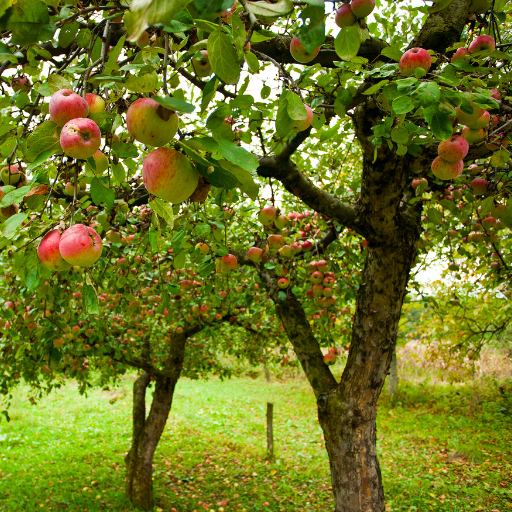
Healthy nutrient uptake and overall health can be enhanced by Epsom salt in fruit trees. Magnesium, an element found in Epsom salts, is very important since it helps to grow chlorophyll. This in turn leads to photosynthesis thus encouraging fast growth of the plant. On the other hand, sulfur is needed for making essential proteins as well as enzymes. When used correctly, Epsom salts can correct common mineral deficiencies that affect fruits such as yellowing leaves and poor fruit development. It is suggested that dissolve one or two tablespoons of Epsom salt into a gallon of water and pour it around the base of your tree or spray it on your plants’ leaves every month throughout the growing season for maximum benefits. This can help to improve flowering span setting and enhance overall yield thus it has become an integral part of routine fertilizer application practices.
Why Are Citrus Trees Thriving with Epsom Salt?
This makes citrus trees among the best beneficiaries of Epsom salt since they require a lot of magnesium. Magnesium is vital in chlorophyll, which is responsible for photosynthesis. Sufficient amounts of magnesium allow trees to properly synthesize energy, hence fast growth and more yield. In addition, Epsom salt helps in nutrient uptake, assisting it in taking up phosphorus and nitrogen, which are important nutrients needed by the tree. The sulphur present in Epsom salt also contributes to the formation of amino acids and proteins necessary for metabolism processes.
An application rate recommended is mixing 1-2 tablespoons per gallon of water monthly as soil drench or foliar spray. This ensures that there is enough magnesium and sulphur to avoid common issues like yellowing leaves (chlorosis) or lack of fruit production. According to technical information, an ideal amount of Mg (magnesium) in soil for citrus trees ranges from 48-60ppm with provision by Epsom salt being one way to achieve this level consistently. Regular use of Epsom salts ensure healthier citrus plants since it increases yields while improving fruit quality.
The Effects of Using Epsom Salts on Apple and Pear Trees
Similarly, apple and pear trees have shown considerable improvement when treated with epsom salts. Magnesium plays a crucial role in chlorophyll’s structure; thus supporting photosynthesis while encouraging proper development of leaves. By using epsom salts regularly, magnesium levels are assuredly maintained at optimum levels boosting leaf colors and energy production.
For apple and pear trees, apparently use 1 cup x the diameter of the trunk spread evenly over the root zone and then apply water extensively until absorbed into the soil well upon root feeding system through watering canals all around them after planting early spring when buds burst open before mid-summer during harvest season ends annually. According to technical data, maintaining a soil magnesium level of 40-50 ppm is good for them and this can be achieved by using Epsom salts.
Moreover, sulfur found in Epsom salt facilitates the formation of essential amino acids including proteins that are vital to apple and pear trees metabolism. Hence, better fruit set and improved fruit quality come from increased nutrient uptake especially of phosphorous and nitrogen. Therefore, inclusion of Epsom salt in the fertilizer schedule helps avoid retarded growth among other issues such as poor fruiting resulting into healthier and more productive apple and pear tree species.
How Epsom Salt Helps the Development of a Stone Fruit
Epsom salt supports stone fruit development by giving them magnesium and sulfur, both of which are fundamental to various physiological processes. Magnesium is essential in synthesizing chlorophyll; it promotes photosynthesis, rich foliage, and overall plant health. On the other hand, sulfur is critical for producing amino acids and proteins that support tree metabolic function. Periodic use of Epsom salts can assist in the intake of vital nutrients such as phosphorus and nitrogen which result in better quality fruit set. It is recommended that 1 cup per inch of trunk diameter be applied around the root zone for this reason with thorough watering, especially early into the growing season and during post-harvest periods. This way, regular supply with magnesium is guaranteed, resulting into best possible growth and fruiting levels.
Epsom Salt for Indoor Plants
Magnesium and sulfur are essential nutrients for indoor plant health. Epsom salt contains both elements in it thus making it an effective source of the two. The main function of magnesium is chlorophyll production, which is important for photosynthesis and as a result, helps to produce lush green leaves. Additionally, sulfur facilitates enzyme and protein synthesis that helps in metabolism and general growth of plants at large. Dissolve 1-2 tablespoons of Epsom salts in one gallon of water and apply every four to six weeks. This supplementation prevents plant nutrient deficiencies thus helping them grow healthy with great resistance to pests and diseases.
Advantages of Using Epsom Salt with Indoor Herbs
Several benefits come with the use of Epsom slats in growing indoor herbs. Firstly, Epsom salt’s magnesium is necessary for the formation of chlorophyll that keep plants’ foliage bright green while promoting photosynthesis process for active leaf activity. As a result, this leads to more healthy, flavorful and aromatic herbs. Likewise,Sulfur allows plant organisms to synthesize proteins and enzymes, among other amino acids, enhancing whole-body metabolism.Apart from these, Epsom salt supplies nitrogenous uptake including nitrogen compounds phosphorous during vegetative growth stage when necessary for increased productivity.Such routine may also help harden off the garden against infestations by insects.
How Flowering Houseplants Blossoms Better With Epsom Salt
Epsom salts provide an advantage over other sources due to their content of magnesium and sulphur when cultivating flowering houseplants; these minerals are crucial to chlorophyll production enabling energy generation by plants as well as supporting flower development. Also,Sulfur supports the production of proteins,vitamins, and amino acids, which are universally required by each plant organ.
Epsom salt can be used to increase blooming effectiveness on house plants.Application usually comprises using one or two tablespoons fulls dissolved in a gallon of water and this should be repeated after every 4 to 6 weeks when plants are actively growing. By doing so, it helps in preventing common nutrient deficiencies that hinder flower development. In addition, some studies have shown that Epsom salt supplementation supports the uptake of such nutrients as nitrogen and phosphorous – both required for healthy blooms.Consistency in its application is what is needed to increase chlorophyll efficiency, leading to more colorful flowers and better resistance to stresses, hence, improved health of flowering houseplants.
Benefits of Epsom Salt on Foliage Plants
Epsom salts significantly contribute to the well-being of foliage plants by providing basic substances necessary for lush green growth. Additionally, magnesium present in Epsom salts is used in the production of chlorophyll, thus enhancing the photosynthetic process within the plant. This leads to a stronger green appearance and other signs of vitality. Sulphur from Epsom salt forms essential enzymes and proteins required for all cellular development during the vegetation period as well.
In the case of foliage plants, one tablespoonful of Epsom salt has to be dissolved in a gallon of water to apply as a foliar spray or soil drench every four to six weeks. The deficiency of nutrients results in yellow and stunted leaves but the systematic supply of magnesium and sulfur can prevent this disorder. According to research, applying Epsom salt improves nutrient uptake, such as nitrogen and phosphorus, which are important for plant growth. This enhances overall plant vigor, thus resulting in a more robust root system and enhanced ability to resist pests and diseases. Regularity in applying helps maintain vigorous leaves making foliage plants look vibrant and healthy with optimal growth pattern achieved in them.
Epsom Salt for Lawns and Turf
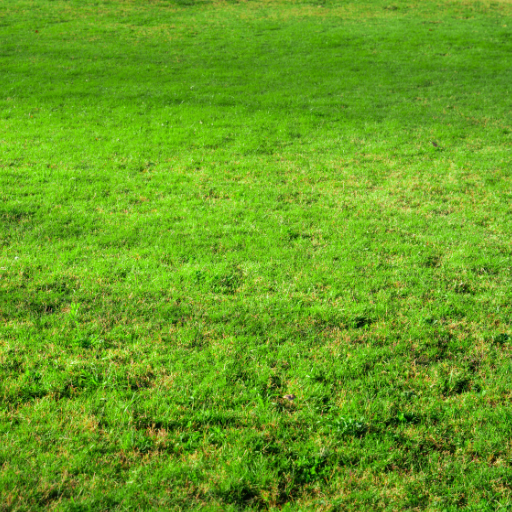
Epsom salt is one of the most effective ways to nourish lawns and turfgrass because it provides almost all essential nutrients, mainly magnesium and sulfur, which are required for chlorophyll synthesis and generally healthy plant development. Magnesium improves photosynthesis and energy production thus making the lawn become greener as well as more robust. Also, sulfur aids in the formation of amino acids and proteins thereby supporting overall turf growth and recovery. Two tablespoons of Epsom salt can be dissolved into every gallon of water for spraying directly onto the lawn during cool periods of the day so that evaporation would not be fast. Alternatively, a broadcaster spreader can spread evenly around the lawn at a pace of about one pound per 1,250 square feet.
The Effectiveness of Epsom Salt on Making Grass Greener
Magnesium sulfate or simply known as Epsom salt has tremendous impacts on making grass green by correcting magnesium deficiencies resulting in chlorosis being its common cause. Magnesium is highly important in chlorophyll formation which is responsible for photosynthesis. Enhancing this process ensures that there will be better efficiency while performing photosynthesis, therefore improving green coloration in grass.
From an expert’s standpoint, two tablespoons per gallon of water should be maintained as an ideal concentration ratio when applying this kind of solution made Epsom salt through foliar spray method hence direct absorption by leaves [blades]. In addition to that, another alternative could have been granular application at a rate of one pound per 1,250 square feet leading to even distribution across the field with constant nutrient release rates. It has been established from empirical studies that after few weeks from the date when it was applied chlorophyll levels rose significantly within lawns treated with Epsom salts resulting in a boosted growth and coloration.
Sulfur is another component provided by Epsom salt, which helps in the biosynthesis of critical proteins and amino acids that are necessary for grass development. For better absorption and utilization of a fertilizer by grass, it is recommended to do application at cool times of the day when evaporation would be slow. This ensures that all nutrients in Epsom salt are not lost before they have been absorbed into the plant system mostly through foliar spray method or granular application since it effectively uses these nutrients. In turn, its regular usage can give an attractive look to lawns while protecting them from such environmental pressures as high temperature, diseases and pests.
How Epsom Salt Boosts Lawn Root Systems
The existence of magnesium and sulfur in adequate amounts contained within Epsom salt enormously contributes to the growth as well as functionality of essential elements for root systems of lawns. Magnesium supports ATP (adenosine triphosphate) synthesis which is responsible for energy storage and transfer inside different cells of plants. As a result, this helps the roots absorb more water leading to increased cell division hence overall boosting their sturdiness and density. Studies reveal that for foliar sprays, 2 tbsp per gallon is effective, while granular applications should be about one pound per 1,250 square feet, ensuring that the nutrient gets to where it is needed most.
Again, sulfur in Epsom salt also facilitates the creation of essential amino acids that form proteins necessary for root growth and development. This is because sulfur helps to regulate soil pH in favoring a condition that encourages expansion of the roots. It has been shown through research that; Epsom salt application improves soil structure by making it more absorptive to water and nutrients thus facilitating strong root systems. Regular applications during cooler periods such as early morning or late afternoon are recommended for optimal performance and reduced evaporation nutrient losses.
Incorporating Epsom salts into lawn care regimens is a way of ensuring an all-inclusive method to nutrient management which will result in stronger roots that are better able to withstand environmental stresses and support lush, healthy turf.
Benefits of Epsom Salt for Improving Turf Density
Epsom salt is famous for its role in improving turf density by supplying the necessary nutrients required for grass growth. The content of magnesium present on this mineral contributes significantly towards chlorophyll formation which is important in photosynthesis hence leading to an increased overall rate of grass growth. Furthermore, sulfur contained in Epsom salt supports the production of amino acids and proteins, which contribute greatly towards healthy growth in terms of shoots and roots of grasses, respectively. Also, different application techniques like mixing with water before foliar spraying or granular spreading ensures that the nutrients are absorbed well by the soil hence their use by the grass. Therefore, continuous usage of Epsom salts results into a healthier lawn with more density thus giving it a potentiality to survive under tough environmental conditions while maintaining its green look always.
Epsom Salt for Shrubs and Bushes
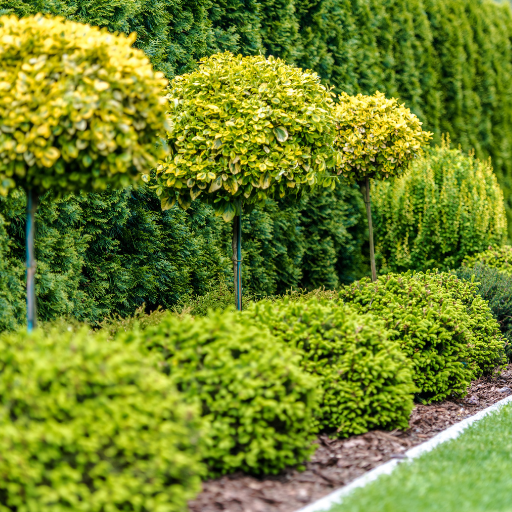
To make them healthier and grow well, put Epsom salt into the maintenance schedules of shrubs and bushes. Magnesium in Epsom salt is important in photosynthesis as it makes plants green by improving their green color and helps in growth of healthy leaves. Furthermore, sulfur found in Epsom salt helps synthesize the required amino acids and proteins vital to plant’s structure and vitality. Proper administration through direct root application or foliar feeding by dissolving it into water ensures that magnesium deficiencies are corrected leading to hardy shrubs and bushes that are resistant to diseases and pests.
Epsom Salt Benefits for Evergreen Shrubs
Evergreen shrubs gain a lot from the use of Epsom salts since they contain high levels of magnesium which aids chlorophyll production thus enhancing photosynthesis thereby promoting a dense green foliage. The presence of sulphur on the other hand aids formative processes involving indispensable amino acids necessary for structural development and good health generally. By using it regularly, nutrient shortages can be avoided enabling evergreens to appear vibrant during all seasons. The application methods, such as mixing with water for foliar sprays or applying as soil amendment, promote efficient nutrient uptake, resulting in hardier shrubs that can better resist environmental stresses, diseases, and pests.
Enhancing Flowering Bushes with Epsom Salt
As for flowering bushes, applying Epsom salts can greatly enhance their blooming potential because necessary nutrients are supplied which boost their growth rates. Photosynthetic efficiency is improved due to magnesium content within the energy produced by a plant (Brown & Bledsoe 111). This supports bigger flowers with more vivid colors compared to those grown without its use. Similarly, presence of sulfur leads synthesis key protein components like amino acids needed especially during building up structures and flowering phases too (Shimada et al., 2015). This is done by diluting Epsom salt in water directly to the soil or as a foliar spray to help improve nutrients uptake and alleviate nutrient deficiency. This way, the quality of blooms will be improved when flowering bushes are treated with Epsom salt increasing their resistance to pests and diseases as well as enhancing healthy growth.
How Epsom Salt Promotes Healthy Hedges
When it comes to chlorophyll production and photosynthesis, essential magnesium in Epsom salt makes hedges healthy. Subsequently, this allows more energy production thus making plants grow strongly with vibrant foliage. On the other hand, sulfur present in Epsom salt helps produce necessary amino acids and proteins that are required for the formation of strong structures and resistance against disease (Kyndt et al., 2015). Including Epsom salt on or into soil by spraying it onto leaves enables it to optimize nutrient absorption that result in hedges being tougher against environmental stress while appearing better overall.
Addressing Plant-Specific Concerns with Epsom Salt
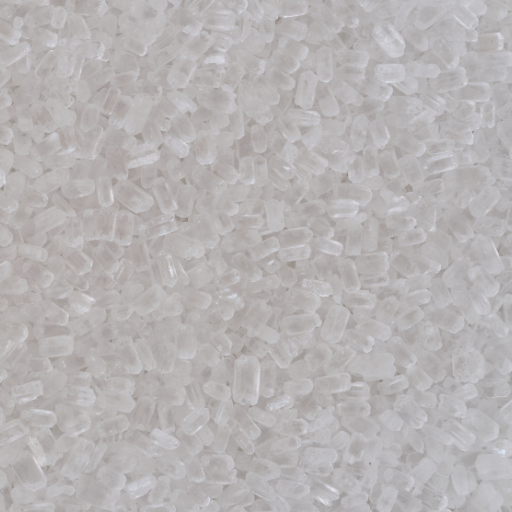
Epsom salt is one of the most important concerns specific to plant that can be addressed through this is a shortage of magnesium, which often causes yellowing leaves and green veins especially with older leaves. Magnesium levels in the soil may be enhanced by applying Epsom salt regularly so as to restore the green color and enhance photosynthesis. Furthermore, Epsom salt aids seed germination and supplies phosphorus and nitrogen needed for healthy plant growth and development. Moreover, blossom-end rot in crops, particularly tomatoes and peppers, can be prevented by ensuring enough calcium is absorbed in them while it enhances their sweetening. As a result, by properly diagnosing symptoms and using Epsom salts correctly, tremendous improvements in plant vigor and productivity can be realized.
Should you overuse Epsom Salt on Sensitive Plants?
Overusing Epsom salt on sensitive plants will have adverse consequences on them. Magnesium toxicities occur among sensitive plants like beans, cucumbers, or lettuce where leaves scorch or become chlorotic between the veins, resembling nutrient deficiency, but are actually caused by excess nutrient requirement. In addition, magnesium at high levels can interfere with the uptake of other essential nutrients, such as calcium and potassium, resulting in an overall imbalance in the nutritional needs of a plant. This imbalance weakens plants’ structure hence less resistance against diseases/pests. According to technical parameters optimum soil magnesium content for most plants ranges from 50-120 ppm (parts per million). Amounts above these figures would lead to poor root formation, affecting yield quality negatively; hence, exceeding this range may impair root development, resulting in poor quality yields, too.The growth of plants is influenced by several factors, including soil fertility and moisture availability.
Balancing other available nutrients with Epsom Salt
Balancing it with other nutrients therefore calls for understanding your plants’ particular needs and existing nutrient composition of the soil. This necessitates conducting a comprehensive soil test that helps in establishing the levels of macro nutrients including nitrogen (N), phosphorous (P), potassium (K) and magnesium (Mg). These figures should then be matched against the ideal range: 40-70 ppm for nitrogen, 25-50 ppm for phosphorus, 120-200 ppm for potassium and ideally between 50-120 ppm for magnesium.
To keep things harmonized, Epsom salts must be used as part of a balanced fertilizer management program. For example, slowly released fertilizer can be mixed into soils to reduce nutrient imbalances by consistently supplying vital macronutrients and micronutrients. Further, Epsom salt or Magnesium sulfate needs to be used in just the right amount, which should not exceed one tablespoon per foot of plant height every six weeks.
Another thing worth considering is your soil’s cation exchange capacity (CEC); low CEC soils are more prone to nutrient leaching. In such cases, smaller, more frequent applications of fertilizers including Epsom salt may be more effective.As regards crops which are sensitive to magnesium levels, there must be a balance between calcium and magnesium ratios to maintain calcium-magnesium ratio at around 7:1 because excess magnesium inhibits calcium uptake.Regular monitoring of both soil and plant foliar nutrients mitigates the deficiency problem promptly thus improving plant health leading to their better yields.
Monitoring Soil Magnesium Levels for Optimal Epsom Salt Use
To monitor the magnesium levels in the soil, begin by collecting soil samples from different points across the area under cultivation so as to have a comprehensive analysis. Send these samples to a certified lab for soil testing where an in-depth analysis of its composition will be provided including magnesium content and other macro-elements. When you get the results of soil tests, compare magnesium levels with the desired range for your specific crops. The rate of Epsom salt application can then be adjusted depending on this reading – where the level of magnesium in the soil is lower than recommended, measured application of Epsom salt (normally 1-2 tablespoons per gallon of water) could be done. To track progress and avoid excessive addition which may disbalance soils leading to poor plant growth, it is necessary to repeat soil sampling at intervals. Regular monitoring coupled with accurate readjustments ensures that there are ideal bounds for magnesium levels thus promoting strong and healthy plant growth
Frequently Asked Questions (FAQs)
Q: What plants benefit from using Epsom salt?
A: Epsom salt can be very beneficial for a range of plants, including tomato plants, pepper plants, roses, and garden plants. It helps improve nutrient absorption and promotes healthier growth.
Q: How much Epsom salt should I add to my garden soil?
A: A common recommendation is to add one tablespoon of Epsom salt per gallon of water and apply this solution to the soil. For larger areas, use one cup of Epsom salt per 100 square feet of garden soil.
Q: Can using Epsom salt prevent blossom end rot in tomato plants?
A: Yes, Epsom salt can help prevent blossom end rot in tomato plants by providing magnesium and sulfur, which are essential nutrients that aid in calcium absorption.
Q: Is Epsom salt good for potted plants?
A: Yes, Epsom salt can be used for potted plants to help them grow stronger and healthier. Add Epsom salt directly to the soil or mix it with water to create a solution that can be applied to the plants.
Q: How often should I use Epsom salt on plants?
A: It is generally advised to use Epsom salt on plants every two to four weeks. Be sure to monitor your plants for any signs of overuse, such as leaf burn or yellowing.
Q: Can I sprinkle Epsom salt directly on plants?
A: It is better to dissolve Epsom salt in water before applying it to plants to ensure even distribution and absorption. Sprinkling Epsom salt directly on plants may cause salt buildup in the soil.
Q: What is the right amount of Epsom salt for plants in a vegetable garden?
A: For vegetable gardens, you can use approximately one tablespoon of Epsom salt per foot of the plant’s height or one cup of Epsom salt per 100 square feet of garden soil, dissolved in water and applied evenly.
Q: How does Epsom salt help plants grow?
A: Epsom salt can help plants grow by providing essential nutrients like magnesium and sulfur. These nutrients aid in chlorophyll production and enhance nutrient uptake, leading to healthier and more vigorous plants.
Q: Should I apply Epsom salt for all types of plants?
A: While Epsom salt can be beneficial for many plants, it is important to understand the specific needs of each plant type. Not all plants require additional magnesium and sulfur, so it’s best to research or consult with an expert on the specific requirements of your garden plants.
Q: How does Epsom salt work to benefit tomato and pepper plants?
A: Epsom salt works by providing magnesium, which tomato and pepper plants need for photosynthesis and enzyme function, and sulfur, which aids in protein synthesis and root development. This results in healthier, more productive plants.






